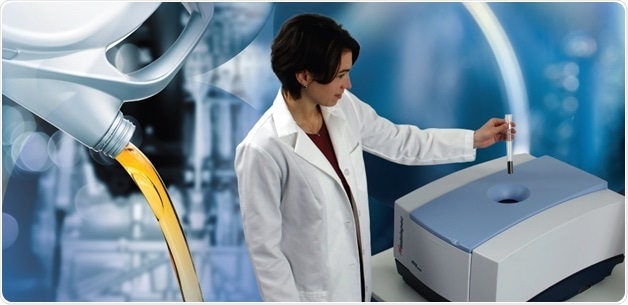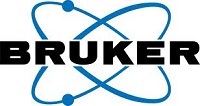
Hydrogenation is a process used for refining vegetable oils and hydrocarbons. Hydrogen consumption presents a significant cost issue in a refinery, whereas percentage hydrogen content serves as a key indicator of refining progress. One major specification that needs to be met for diesel and jet fuel is hydrogen content at the endpoint.
In order to keep hydrogen consumption as low as possible and also to demonstrate compliance to official specifications, a reliable and accurate analytical method is definitely needed. The minispec NMR is one such method that is developed to meet speed, precision and accuracy requirements for process control. The instrument features a robust design, requiring minimal service. The minispec can be easily operated and does not call for skilled personnel.
Other reasons for hydrogen content analysis
- Higher hydrogen content means better petrol combustion and higher quality
- Thermal radiation, exhaust smoke and soot deposits increase with decreasing hydrogen content
ASTM* D 7171 is an International Standard Method based on Pulsed TD-NMR
Hydrogen content by TD-NMR
- QA/QC measurement
- Fast, non-destructive, solvent free
- Simple calibration using a few number of commercially available compounds
- All Official International Standard Methods supported (ASTM D 3701, ASTM D 7171 and ASTM D 4808)
- Minimum sample preparation
- Excellent reproducibility
- High return on investment
- Dedicated analyzer with perfectly adapted software
*ASTM: American Society for Testing and Materials

According to ASTM pure hydrocarbons can be used for instrument calibration.
minispec Calibration
There are two viable calibration methods:
- With reference values and samples as supplied by the user
- With pure hydrocarbons − like dodecane − as available from chemical suppliers
Sample Handling and Tube Sizes
This method typically uses two tube sizes: either 40 mm or 18 mm diameter tubes. PTFE plugs with rod are also provided which prevent sample evaporation. Metal block thermostats are largely used for sample pre-tempering, because they only require electricity – even for permanent operation.
Typical measurement time
Strong NMR signals are exhibited by the samples, allowing a good signal to noise ratio and leading to a short measurement time of just one minute.
Further applications of minispec in petrochemical industry
- Total hydrogen content in coal
- Oil content determination in oil shale and oil sands
- Oil content determination in paraffin/wax
- Relaxation time analysis on rock cores
- Viscosity determinations of oils

All types of hydrocarbons can be examined, from light distillates up to residua, gas oils as well as aviation turbine fuels
International Methods
The International Standard methods propose calibration with pure hydrocarbons. The recent ASTM D 7171 method includes a list of proposed calibration substances with related hydrogen content values.
Percent Hydrogen Calculation
In addition, the compounds’ hydrogen content can be measured directly, since the chemical formula is well-recognized and the substance purity is extremely high.
List of International Methods
- ASTM D 3701 (Aviation Turbine Fuels)
- ASTM D 4808 (Light and Middle Distillates, Gas Oils and Residua)
- ASTM D 7171 (released 2005, based on pulsed NMR) for Middle Distillate Petroleum Products
Using the pulsed NMR minispec instead of the original cw-NMR instruments can fulfill and even exceed the ASTM methods D 4808 and D 3701. The pulsed NMR method is faster, more accurate and more sensitive, also allowing more applications.
Typical System Configuration(s): Jet fuel or Diesel (homogenous fractions/low viscosity liquids)
mq-one Hydrogen Analyzer
- Dedicated to hydrogen content application
- Sample diameter: 18 mm
minispec mq20
- Hydrogen content application
- Sample diameter: 18 mm
- For more applications, see 'Further minispec Applications in Petrochemical Industry'
Heavy Fractions/Distillates, (non-homogenous samples, viscose liquids and more)
minispec mq10
- Hydrogen content application
- Sample diameter: 40 mm
- For more applications, see 'Further minispec Applications in Petrochemical Industry'
Remark: For more heavy fractions, sometimes tempering and measuring the samples at a higher temperature is reasonable, like for instance at 50 °C. For this application, variable temperature probes are available.
The mq-one Analyzer Comes in a Package with
- 18 mm Ø PTFE plugs
- 18 mm Ø glass tubes
- minispec Plus Software
- Sample preparation block
minispec Plus Software for mq-one
- Easy to use, multi-lingual and 21CFRPart11 compliant software
- Pre-defined method for determination of hydrogen content
- User rights for administration (full access), calibration & measurement, and measurement only
About Bruker BioSpin Group
The Bruker BioSpin Group designs, manufactures, and distributes advanced scientific instruments based on magnetic resonance and preclinical imaging technologies. These include our industry-leading NMR and EPR spectrometers, as well as imaging systems utilizing MRI, PET, SPECT, CT, Optical and MPI modalities. The Group also offers integrated software solutions and automation tools to support digital transformation across research and quality control environments.
Bruker BioSpin’s customers in academic, government, industrial, and pharmaceutical sectors rely on these technologies to gain detailed insights into molecular structure, dynamics, and interactions. Our solutions play a key role in structural biology, drug discovery, disease research, metabolomics, and advanced materials analysis. Recent investments in lab automation, optical imaging, and contract research services further strengthen our ability to support evolving customer needs and enable scientific innovation.
Sponsored Content Policy: News-Medical.net publishes articles and related content that may be derived from sources where we have existing commercial relationships, provided such content adds value to the core editorial ethos of News-Medical.Net which is to educate and inform site visitors interested in medical research, science, medical devices and treatments.